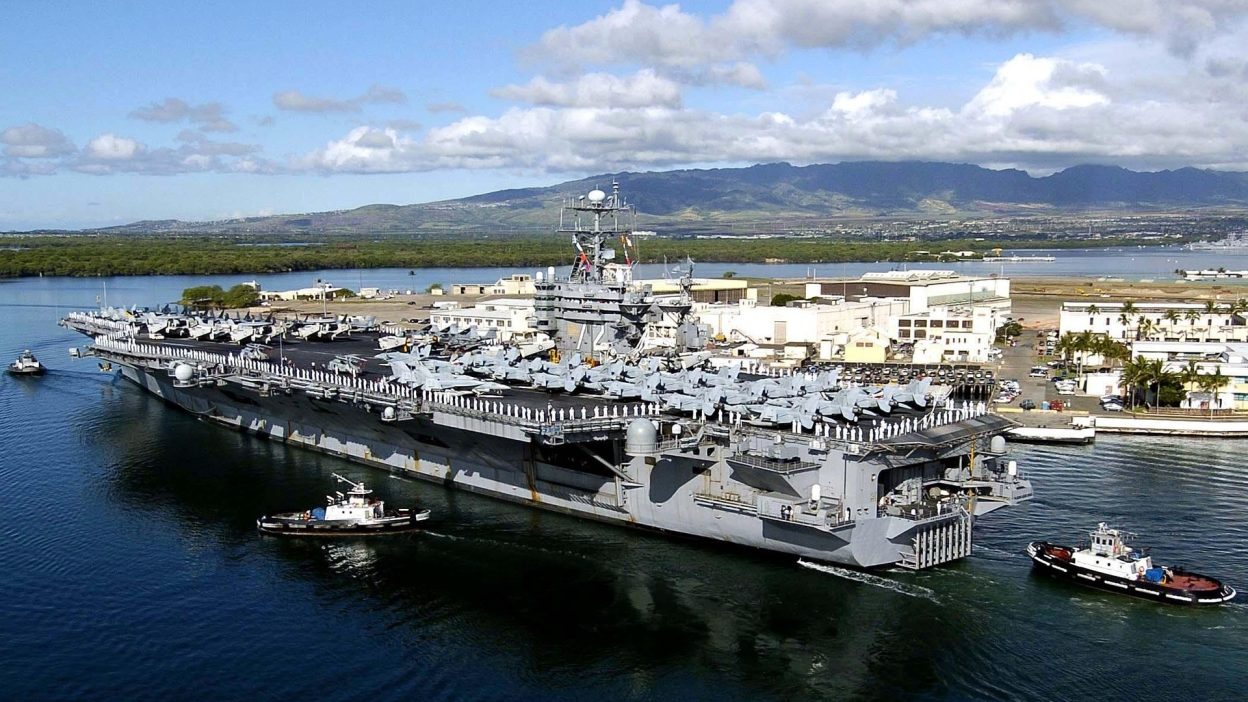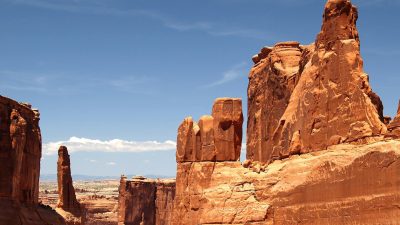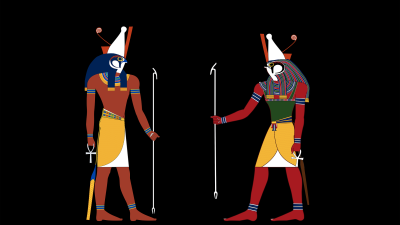The Day America Was Caught Off Guard
1. The Path to Destruction: Was Pearl Harbor an Avoidable Catastrophe?
The attack on Pearl Harbor on 7th December 1941 was not a random strike—it was the result of years of rising geopolitical tensions between the United States and Japan. The seeds of this conflict were sown in the early 20th century when Japan sought to establish itself as a dominant force in the Pacific. However, this expansionist ambition directly clashed with U.S. interests in Asia.
By the late 1930s, Japan had aggressively expanded into China and Southeast Asia, leading the U.S. and its allies to impose crippling economic sanctions. In particular, America’s decision to cut off Japan’s access to oil, steel, and rubber severely impacted its war machine. Japan now faced a difficult decision—either withdraw from its conquests or take drastic action to secure new resources.
Japan saw war with the U.S. as inevitable, but it needed a strategy to gain an early advantage. Thus, Japanese military leaders devised a bold plan: cripple America’s Pacific Fleet in one swift attack, preventing it from interfering with Japan’s continued conquest of Asia. Pearl Harbor, home to America’s most powerful warships, became the prime target.
Despite multiple warning signs, the U.S. dismissed the possibility of an attack on its own soil. Intelligence reports suggested an impending assault, but American officials believed Japan would target the Philippines or British territories instead. This false sense of security set the stage for one of the most devastating and humiliating defeats in U.S. history.
2. The Morning of Chaos: Japan’s Brutal Assault on Pearl Harbor
As Sunday morning unfolded, American sailors at Pearl Harbor went about their routines, unaware that disaster was about to strike. At 7:55 AM, the sky erupted with the roar of aircraft engines as hundreds of Japanese bombers, torpedo planes, and fighter jets launched a coordinated assault on the naval base.
The first wave of attacks focused on battleships docked in the harbour, with torpedoes and bombs ripping through steel hulls, sinking ships within minutes. The USS Arizona, one of the most powerful vessels in the fleet, was hit by a direct bomb, which penetrated deep into its magazine storage. The resulting explosion was so violent that the ship was torn apart, sending more than 1,100 sailors to their deaths in an instant.
As American forces struggled to understand what was happening, a second wave of 171 additional Japanese aircraft arrived. This time, the focus shifted to airstrips and military infrastructure, ensuring that American planes could not take off to retaliate. Hangars were set ablaze, aircraft were destroyed on the ground, and communication lines were severed, leaving Pearl Harbor in total disarray.
The entire attack lasted less than 90 minutes, but in that short time, the Pacific Fleet was decimated, and America had suffered one of the most devastating military defeats in its history.
3. Unprecedented Destruction: The Devastating Losses at Pearl Harbor
- Human Casualties
More than 2,400 American servicemen and civilians lost their lives, with another 1,100 wounded. The USS Arizona alone accounted for nearly half of the deaths, as it sank within minutes, trapping hundreds of sailors inside. - Naval and Aerial Damage
The U.S. suffered catastrophic losses:- 8 battleships were targeted, with 4 sunk and the rest heavily damaged.
- Nearly 200 aircraft were destroyed on the ground before they could take off.
- Multiple cruisers, destroyers, and auxiliary ships were also either sunk or rendered inoperable.
- Japan’s Minimal Losses
In stark contrast, Japan suffered only 64 casualties, losing 29 aircraft and five midget submarines. This massive imbalance highlighted just how one-sided and devastating the attack was.
4. A Failure of Intelligence: How Did America Not See This Coming?
The attack on Pearl Harbor remains one of the most significant intelligence failures in history. Despite numerous warning signs, miscommunication, bureaucratic delays, and arrogance left the U.S. vulnerable to a sneak attack.
The most shocking intelligence failure occurred just hours before the attack, when the U.S. intercepted a Japanese message indicating that something major was about to happen. However, due to slow decision-making, the warning never reached Pearl Harbor in time.
Even more damning was the radar report on the morning of the attack. American radar operators detected a large fleet of aircraft approaching Hawaii, but their superiors dismissed the warning, assuming they were U.S. bombers arriving from the mainland.
These errors and miscalculations meant that when Japanese bombers appeared over Pearl Harbor, there was no defence in place, leaving the fleet completely exposed.
5. Survivors’ Accounts: First-Hand Horror from That Fateful Morning
Those who lived through the attack on Pearl Harbor recall a morning of terror, confusion, and helplessness.
Sailors aboard the USS Oklahoma described how their ship capsized within minutes, trapping dozens of men below deck. Some managed to escape through small air pockets, while others pounded on the ship’s hull, desperately waiting for rescue teams. Tragically, many suffocated or drowned before help could reach them.
On the USS Arizona, survivors witnessed a massive fireball consume the ship as ammunition ignited, sending debris hundreds of feet into the air. Men jumped into the oil-covered water, only to catch fire as burning fuel spread across the harbour.
For civilians in nearby Honolulu, the attack was equally terrifying. Explosions and gunfire could be heard across the city, and many feared that a full-scale invasion of Hawaii was underway.
6. How Pearl Harbor Changed the Course of World War II
Before the attack, the United States had remained neutral, avoiding direct involvement in World War II despite ongoing conflicts in Europe and the Pacific. However, Pearl Harbor changed everything.
On 8th December 1941, just a day after the attack, the United States declared war on Japan. This decision officially dragged America into the global conflict, setting the stage for some of the most brutal battles in history.
The attack galvanised the American public, uniting the nation in a way that had never been seen before. What Japan had hoped would be a crippling blow to U.S. military power instead became the rallying cry for American vengeance.
Within four years, the United States launched a relentless counteroffensive, culminating in the dropping of atomic bombs on Hiroshima and Nagasaki in 1945, forcing Japan to surrender.
7. Why Did Japan Attack Pearl Harbor?
- Economic Sanctions Crippled Japan’s Expansion Plans
The U.S. had cut off Japan’s access to critical war materials, leaving it desperate for resources. - Japan Needed to Weaken the U.S. Military Presence
The Japanese high command saw Pearl Harbor as a threat to its Pacific dominance and sought to neutralise it immediately. - Japan Underestimated America’s Response
Japanese leaders believed that a swift and decisive attack would force the U.S. to negotiate peace—a massive miscalculation.
8. The Aftermath: Lessons from Pearl Harbor
The attack on Pearl Harbor was a wake-up call for the United States, exposing serious weaknesses in intelligence gathering, military preparedness, and national security. In response, the U.S. government made drastic changes to its defence systems, intelligence agencies, and military strategy.
One of the most significant consequences was the revamp of American intelligence operations. Before Pearl Harbor, intelligence was poorly coordinated, with different branches of the military working independently and often failing to share crucial information. This failure directly contributed to the lack of warning before the attack. To prevent such mistakes in the future, the U.S. created the Office of Strategic Services (OSS), which later evolved into the Central Intelligence Agency (CIA). This ensured that military intelligence would be more organised and effective in detecting future threats.
In addition, the attack led to massive advancements in military technology and readiness. The U.S. expanded its naval power, developed advanced radar systems, and improved communication channels to prevent similar surprise attacks. The military also established new training programmes to ensure that personnel could respond rapidly and effectively to unexpected threats.
Politically, Pearl Harbor shattered American isolationism. Before the attack, many Americans were reluctant to join World War II, believing the U.S. should stay out of global conflicts. However, after Pearl Harbor, the nation united in support of the war effort, leading to massive military recruitment, war production, and an unprecedented mobilisation of resources.
Beyond the U.S., Pearl Harbor served as a lesson to the world about the dangers of underestimating potential threats. It demonstrated that even the most powerful nations are vulnerable if they fail to anticipate and prepare for enemy actions.
9. The USS Arizona Memorial: A Lasting Reminder of a Dark Day
Today, the USS Arizona Memorial stands as a powerful tribute to the 2,400 Americans who lost their lives on 7th December 1941. Located in Pearl Harbor, Hawaii, the memorial is built directly over the sunken remains of the USS Arizona, one of the battleships destroyed during the attack.
The memorial serves as a symbol of sacrifice, resilience, and remembrance. Visitors can see the wreckage of the ship beneath the water, where more than 900 sailors remain entombed. The sight of oil still leaking from the Arizona’s hull, known as the “tears of the Arizona”, is a haunting reminder of the devastation that occurred that day.
Every year, thousands of people visit the site, including survivors, military personnel, historians, and ordinary citizens, all paying their respects to those who perished. The Pearl Harbor National Memorial also includes exhibits, photographs, and survivor testimonies, ensuring that future generations never forget the lessons of Pearl Harbor.
The attack is remembered annually on Pearl Harbor Remembrance Day, a solemn occasion when flags are lowered to half-mast and survivors gather to honour their fallen comrades. The USS Arizona Memorial ensures that the horrors of war and the cost of unpreparedness remain etched in history.
10. Conclusion: Could It Happen Again?
The attack on Pearl Harbor was a moment of national tragedy, but it also reshaped the world. It forced America into World War II, ignited massive military advancements, and proved that complacency in times of rising tensions can lead to disaster.
But could a similar attack happen again?
While military technology has evolved dramatically since 1941, the lessons of Pearl Harbor remain relevant today. History has shown that no nation is invulnerable, and overconfidence in military superiority or intelligence capabilities can lead to devastating consequences. The 9/11 attacks in 2001 proved that even with advanced surveillance and security measures, determined enemies could exploit weaknesses and strike when least expected.
In a world where geopolitical tensions continue to rise, the risk of another Pearl Harbor-style attack cannot be ignored. Nations must remain vigilant, invest in intelligence gathering, and take potential threats seriously to avoid repeating the mistakes of the past.
The memory of Pearl Harbor serves as a warning, a lesson, and a call to remain prepared in an unpredictable world.
FAQs About Pearl Harbor
1. Why did Japan attack Pearl Harbor?
Japan attacked Pearl Harbor to cripple the U.S. Pacific Fleet and prevent American interference in its expansion across Southeast Asia and the Pacific. The attack was meant to buy Japan time to secure resources and strengthen its military position.
2. How many people died in the Pearl Harbor attack?
A total of 2,403 Americans were killed, including 2,335 military personnel and 68 civilians. More than 1,100 people were wounded, and several ships and aircraft were destroyed.
3. How did the U.S. respond to the attack?
The U.S. declared war on Japan the very next day, on 8th December 1941, officially entering World War II. The attack also led to massive military mobilisation and a shift in American foreign policy.
4. Is the USS Arizona still underwater?
Yes, the USS Arizona remains submerged at Pearl Harbor, serving as a war memorial. The wreck still contains the remains of over 900 sailors, making it both a historical site and a war grave.
5. Could a similar attack happen again? While military defences are far more advanced today, history has shown that surprise attacks are still possible.




